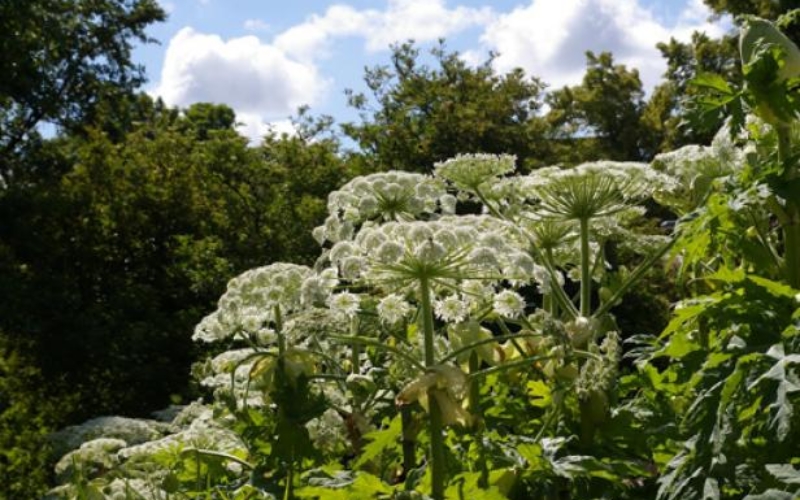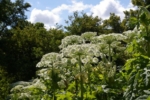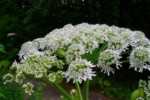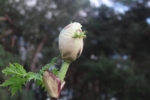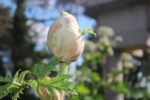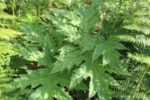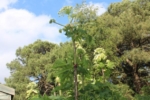How to Identify Giant Hogweed
Giant hogweed identification shouldn’t be difficult as it’s the largest herbaceous plant that grows in Britain, growing to 5 metres tall when healthy and undisturbed. However, there are factors which complicate identification, such as the time of year, the lifecycle of the plant and whether it has been treated or damaged.
Giant Hogweed in Spring
In early spring, new saplings arising from seed will look very different to an adult plant, with thin stems and rounded leaves. These will quickly develop into bushy specimens with leaves that look more like those of the adult plant, only smaller. A two or three year old giant hogweed will still not have the tall, characteristic spike that the plant is known for, but will look a bit like a huge rhubarb with incised leaves.
Giant Hogweed in Summer
Established giant hogweed that is three or four years old, having grown from ground level in the spring, will push up the huge central stem on which the main flower head develops. Fully grown it’s a really impressive sight, towering over even the tallest people. The leaves will be huge, each when fully grown easily spanning a metre. The main flower heads are also striking, with thousands of tiny white flowers covering an umbrella-shaped dome spanning 80 centimetres. The hollow, ridged central stems can be up to 12 centimetres wide and are green with extensive purple splotches and thick white hairs which are denser circle at the base of each leaf stalk.
Giant Hogweed in Autumn
Autumn is the time that giant hogweed dies back. If the plant has matured to the flowering stage, the seeds will have set and, although most will have by now been dispersed, some will be clinging on for a while longer. The oval shaped seeds are cream coloured, thin and papery but fairly large, being up to one centimetre long, with four dark stripes on one side and two on the other.
Giant Hogweed in Winter
All that is left of giant hogweed plants is the tall dead stems of the central spike, the leaves having shrivelled and fallen during the autumn. The flower head may remain intact, providing an extra clue that a giant hogweed infestation is in the location, with new saplings and two or three year old plants getting ready to emerge the following spring.
Affordable Giant Hogweed Identification Service
It is sometimes difficult to be sure whether you have giant hogweed because it is commonly mistakenly identified for other species of weed such as common hogweed, cow parsley and hemlock.
PBA Solutions undertake site surveys to determine whether or not giant hogweed is present and, if it is found, document and report on the findings. Our reports can be used as part of the property management or development process as well as outlining the most appropriate methodology for a treatment programme.
PBA Solutions can help you with our free ‘Spot My Weed!’ invasive weed identification service. By clicking the link, you can send us some photographs (close-ups are preferable) of the plant(s) you have found and email them with any additional details and your name and telephone number. We will look at the photographs and do our best to help identify the weed for you.


